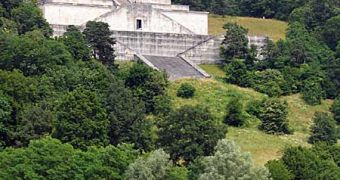Danube is like a vertebral column of the European continent and a navigable path connecting 9 countries over 2,850 km (1,800 mi), while gathering its affluents from an area of 817,000 square km. It is the 26th river in the world, and the second in Europe after Volga. It originates in the Black Forest Mountains in Germany and flows to the southeast till the Black Sea. But not its size gives its importance. This large river has been the environment that favored the thriving of one of the most important civilizations. It crosses Germany, Austria, Slovakia, Hungary, Serbia, Bulgaria, Romania, Moldova and Ukraine. How many other rivers pass through 4 capitals (which in this case are Vienna, Bratislava, Budapest and Belgrade)? None.
2,000 years ago, Danube made the border between the civilized Roman world and the Barbarians. After the fall of the Roman Empire, Danube formed the border of the Byzantine Empire till the 12th century At Nikopol, a city founded by the Byzantine emperor Heraclius in 629 on the Danube, the Ottoman sultan Baiazid I defeated the Hungarian king Sigismund, marking the beginning of the Turkish domination in the area, that lasted for five centuries. Later, Danube formed the threshold for the Ottoman Empire, who could not extend beyond Vienna, after two failed sieges in 1529 and 1683.
The most important trait of the Danube is the diversity of the civilizations that thrived on its banks: there is not other river that inspired so many the art, from music to poetry and painting.
"No other river in Europe matches Danube's historical importance" wrote the German writer Werner Heider.
Others remark the Danube as a route for the invasions from the East: from Huns to Tartars, Mongols and the Turks.
In 1842, the Bavarian king Louis I finished Walhalla, a marble temple in the Doric style, built in the honor of the deceased proeminent Germans. The temple raises on a high hilly coast near Regensburg. It is a copy of the Athens's Parthenon and harbors the busts of many famous men and women. Many of them, like Beethoven, Einstein, Goethe, Gutenberg, Kepler and Luther knew very well the Danube, as they lived on its banks.
In Regensburg died in 1630 the astronomer Kepler, while the Stone Bridge build in the 12th century here was considered an marvel of the architecture.
In 1879, in Ulm, a German city on the Danube, was born Albert Einstein.
To see the role of the Danube in modeling the European civilization, look at Vienna. It is one of the renown cultural centers of the world, rich in theaters, including opera theaters, museums, historical houses, and libraries. It is famous for its cafeterias and pubs. The Philharmonic Orchestra of Vienna is considered one of the best in the world. The University of Vienna, founded in 1365, is one of the oldest Germanic universities. But Vienna has been a fertile terrain that would model the world in good or bad. Amongst those influenced by the years spent there are Theodor Herzl, the founder of the Sionism, Sigmund Freud, the father of the psychanalysis, and Adolf Hitler.
Budapest, the Hungarian capital, is named "The Queen of the Danube". It is made of Buda, on the western bank, and Pest, on the eastern side.
Bratislava was between 1526-1784 the capital of the Hungary and a castle dominating the river was the residence of the Habsburg emperors.
When in 1867 Johann Strauss Jr composed "The Blue Danube", the river could have been crystal clear. But the construction of the Gabcikovo dam between Vienna and Budapest harmed the environment, as the dam induced a significant drop of the table water levels along the Danube, the drying of thousands of forest and swamp hectares and the reduction by 80 % of the fishing in some areas of the lower Danube.
Together with the other three large rivers flowing into the Black Sea, Danube made this sea one of the most contaminated in the world. In the last 30 years, Black Sea has turned into the drainage channel of half Europe, filled with phosphorus chemicals, mercury, DDT, petroleum and other toxic wastes.
The Danube finishes its adventure on a magnificent delta. 2,500 years ago, ancient Greeks mentioned on the place of the current delta a gulf. Danube Delta is one of the youngest lands in Europe. It has a surface of 2,540 square km and advances annually with 40 m (133 ft) into the sea. Each year an amount of 58.7 million tons of sediments are deposited in the Danube Delta.
This is the most species rich wetland of Europe, and also one of the least populated: about 5,000 inhabitants. It is one of the most incredible places in Europe: the reed grows up to 5-6 m (17-20 ft) tall, and about 300 species of birds nest here, and the most interesting European colonies of pelicans (both white and Dalmatian) are found here. Just the flamingos lack.
Since 1990 it was declared a Biosphere Reserve.
Danube can be considered the Amazon of the Europe: it has the highest number of freshwater fish species in the continent, about 100 (yes, I know, there are over 3,000 freshwater fish species in the Amazon, but this is Europe!).
Still, one detail: Danube has the highest number of sturgeon fishes amongst all rivers in the world: 6. These "living fossil" fishes produce the famous caviar.
Unfortunately, the construction of the Iron Gate dam between Romania and Serbia, finished in 1972, interrupted the spawning migration route of the sturgeons that once advanced on the river till Hungary, and today their number is greatly reduced compared to other times.
In the area of the Iron Gate, the Danube crosses the Carpathians, forming one of the most beautiful river gorges in Europe. On the Romanian side, in the Mraconia Valley, you can see the huge carved face of the Dacian king Decebalus, 40 m (133 ft) long and 25 m (83ft) wide, in the style of the famous American presidents in the Mount Rushmore. Dacians were the oldest Indo-European civilization in the banks and Romanians presume to be the result of their mix with the Romans.

 14 DAY TRIAL //
14 DAY TRIAL // 

